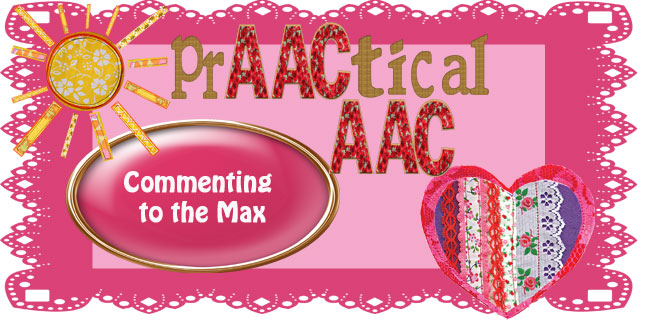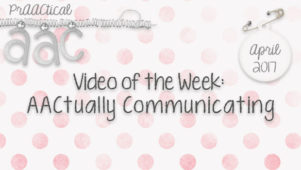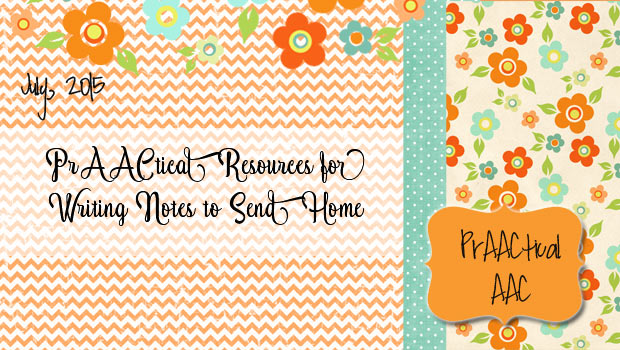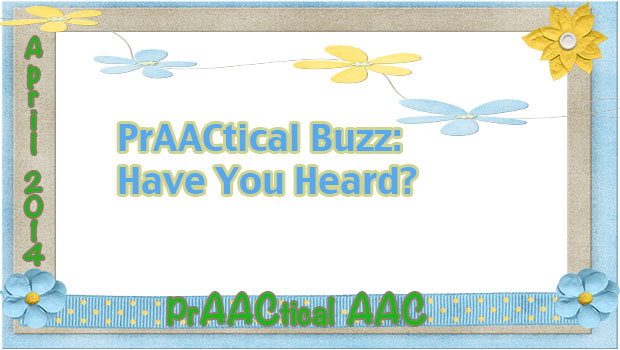Commenting to the Max!

 Communication and language involves so much more than requesting. Without much effort, communicators with typical language development and even delayed language development communicate for many reasons. Showing or telling about a shared interest comes easily and is a form of commenting to communicate. Commenting is one of the most social reasons that we communicate. So, it makes perfect sense that children with social communication disorders may not have an easy time with these social aspects of communication and language. We know many children who frequently use long (or short) sentences to say ‘I want the blue truck’, ‘I want the big ball’, or even ‘Can I have the cold drink’. They may even communicate frequently to ask for toys, games, or activities of their choice. All of the requesting is GREAT but not enough to be part of comprehensive conversations and social language interactions. It is not that children with social communication impairments don’t want to communicate for social reasons, it is just that it does not come as naturally . So, because of this we are always looking for great opportunities to teach commenting.
Communication and language involves so much more than requesting. Without much effort, communicators with typical language development and even delayed language development communicate for many reasons. Showing or telling about a shared interest comes easily and is a form of commenting to communicate. Commenting is one of the most social reasons that we communicate. So, it makes perfect sense that children with social communication disorders may not have an easy time with these social aspects of communication and language. We know many children who frequently use long (or short) sentences to say ‘I want the blue truck’, ‘I want the big ball’, or even ‘Can I have the cold drink’. They may even communicate frequently to ask for toys, games, or activities of their choice. All of the requesting is GREAT but not enough to be part of comprehensive conversations and social language interactions. It is not that children with social communication impairments don’t want to communicate for social reasons, it is just that it does not come as naturally . So, because of this we are always looking for great opportunities to teach commenting.
When we came across a copy gram of pictures from Toca Boca Hair Salon (one of our favorite apps), we started thinking of ALL of the commenting opportunities.We will be having fun commenting:
5 comments for a commenting communication board:
- Wow, so cool!
- Craaazy hair!
- Colorful to the max!
- Funny!
- My favorite!
Language Facilitation Strategies to Teach Commenting
- Use Expansions
- Use wait and signal cues (also called time delay prompts, just remember to add the raised eye brows and wide open eyes while waiting
- Use visual supports and AAC (the commenting board/page)
- Use aided language input

Filed under: PrAACtical Thinking
Tagged With: commenting, communication
This post was written by Robin Parker





2 Comments
Love it!! We encourage commenting in our therapy office MORE than requesting for all of our AAC users. Another idea we use, that has recently received research validation, is to add color cues to communication displays to help kids differentiate between positive and negative comments, ex. Positive comment buttons are green and negative comments are red. This seems to help our kids who are still learning the subtle meaning of the comments. At a minimum they can be sure they are saying something good or bad simply by the color they select. Fun stuff!!
Wow, thanks for sharing that idea! I love it. Will definitely incorporate into our work. I love having both positive and negative because in reality we ALL make both types.